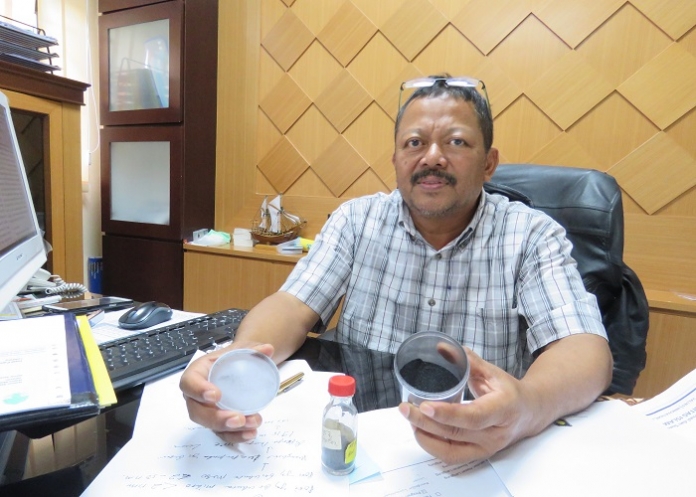Activated Carbon: Effectively Tackling Pollution
Active Carbon shell is made from palm oil and has a very wide surface. This enables the active carbon to be very effective at coping with environmental pollution and is especially adsorbent.
Thus the results of research of Allwar, PhD, Dean of the Faculty of Mathematics Natural Sciences (FMIPA) Indonesian Islamic University (UII) in Yogyakarta. This discovery was obtained after several attempts with different materials and through chemical or physical processes.
Described Allwar, this research was inspired by many residents who are using charcoal as a water filter. But the charcoal filter water doesn’t yield optimal results. So Allwar had the idea of doing the study makes activated carbon.
There are two ways to make activated carbon: using chemical processes and physical processes in the inert gas. While the ingredients for making activated carbon mixed as coconut shells, oil palm shells, bamboo, animal bones and others.
Combustion to make activated carbon using hot temperature of between 300 C to 800 C. “The heat is determining the extent of the surface of activated carbon is produced,” said Allwar in Yogyakarta, Monday (2/1/2017).
In this study, Allwar was using a chemical KOH or H3PO4 or Zn Cl2. The addition of these chemicals determine the width of the pores of activated carbon.
Burning of oil palm shell with a temperature of 700 C obtained carbon surface area of 1915 M2G-1. So that one gram of activated carbon has a surface area of 19 meters x 100 meters. “The surface area is the highest ever achieved in 2250 M2G-1,” he added.
Activated carbon can be used to tackle environmental pollution as absorbent pollution of air and water, water purification, etc. “Other uses as a catalyst in the reaction; composites that conduct electricity; absorbing heavy metals; and capacitor batteries,” said Allwar.





